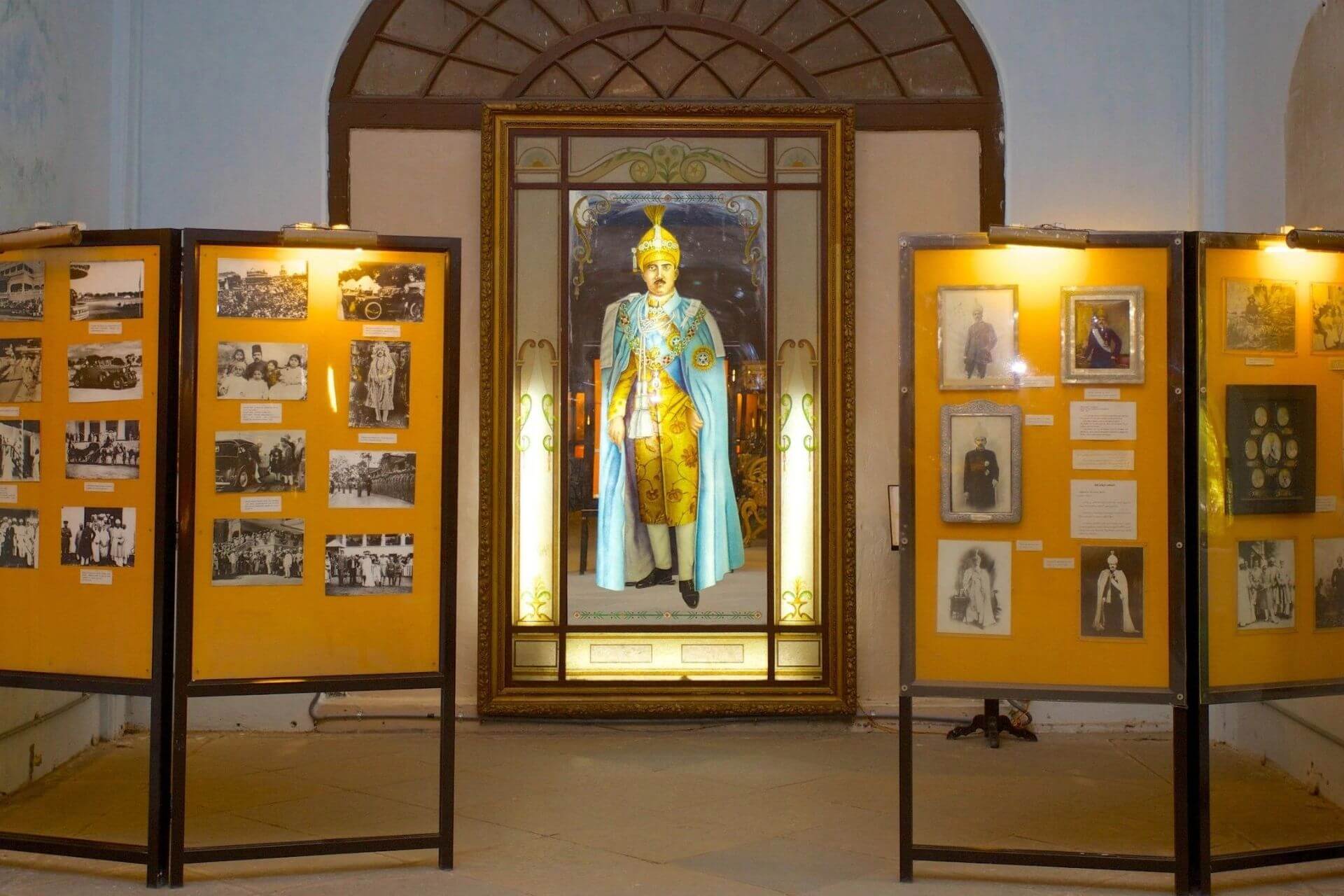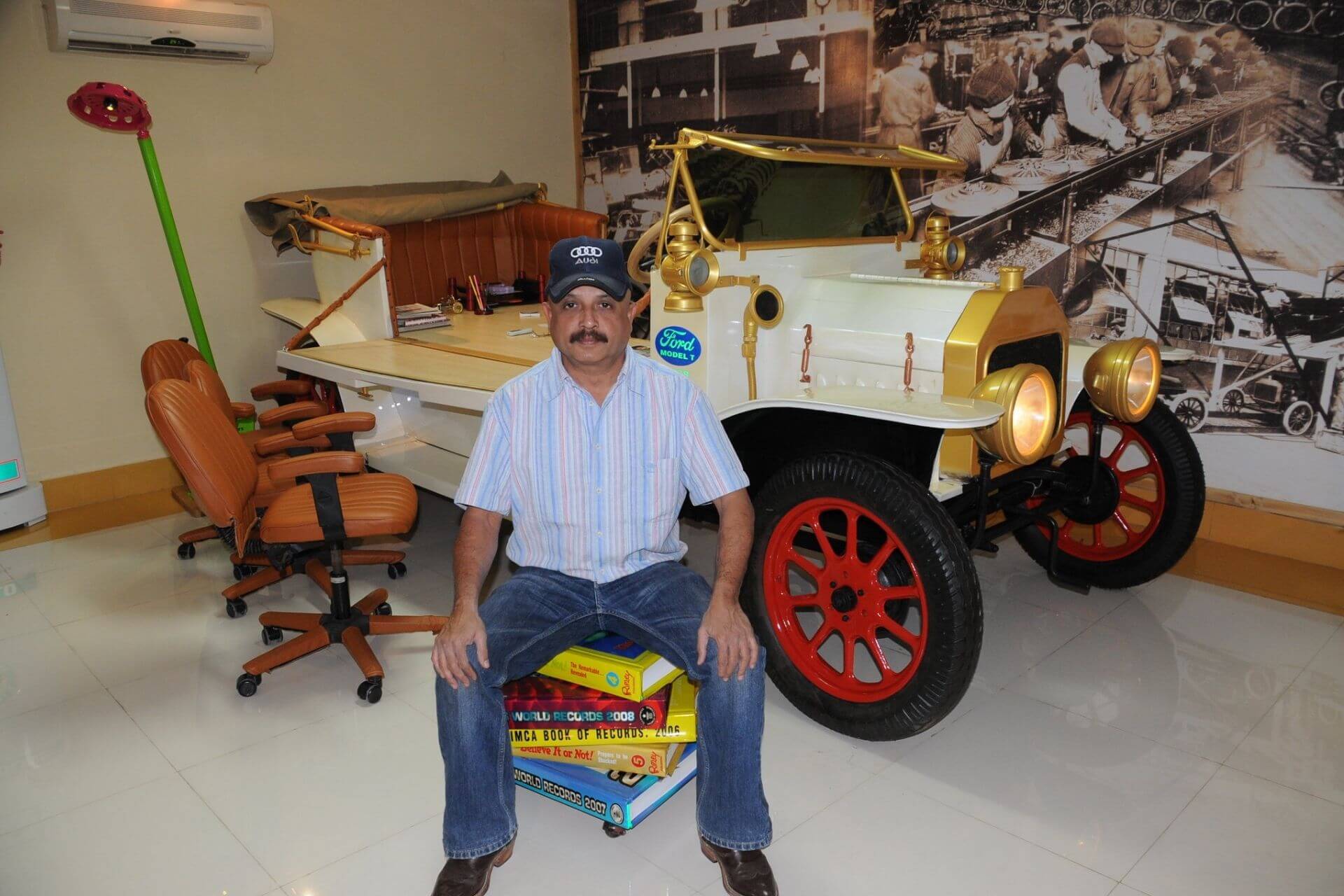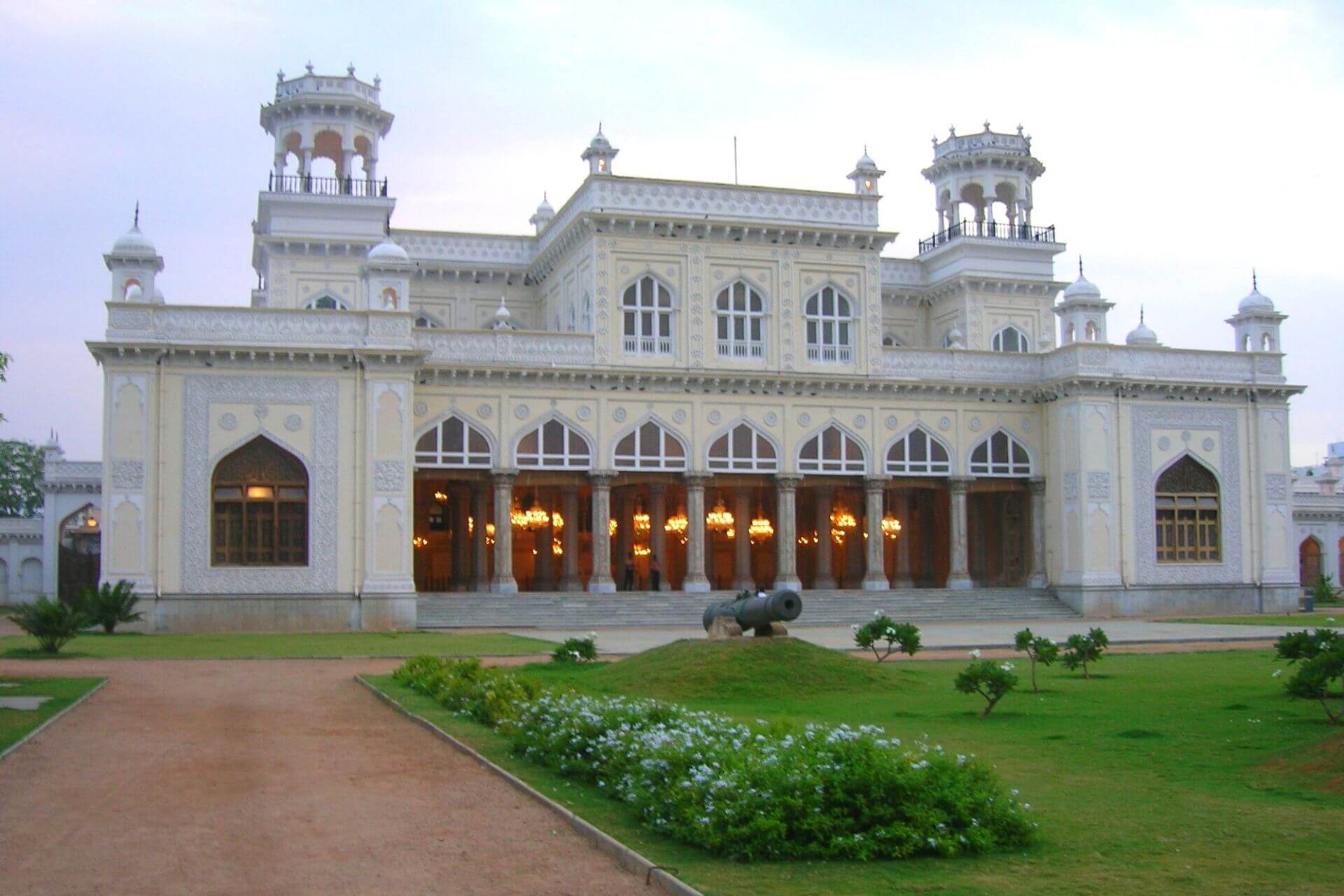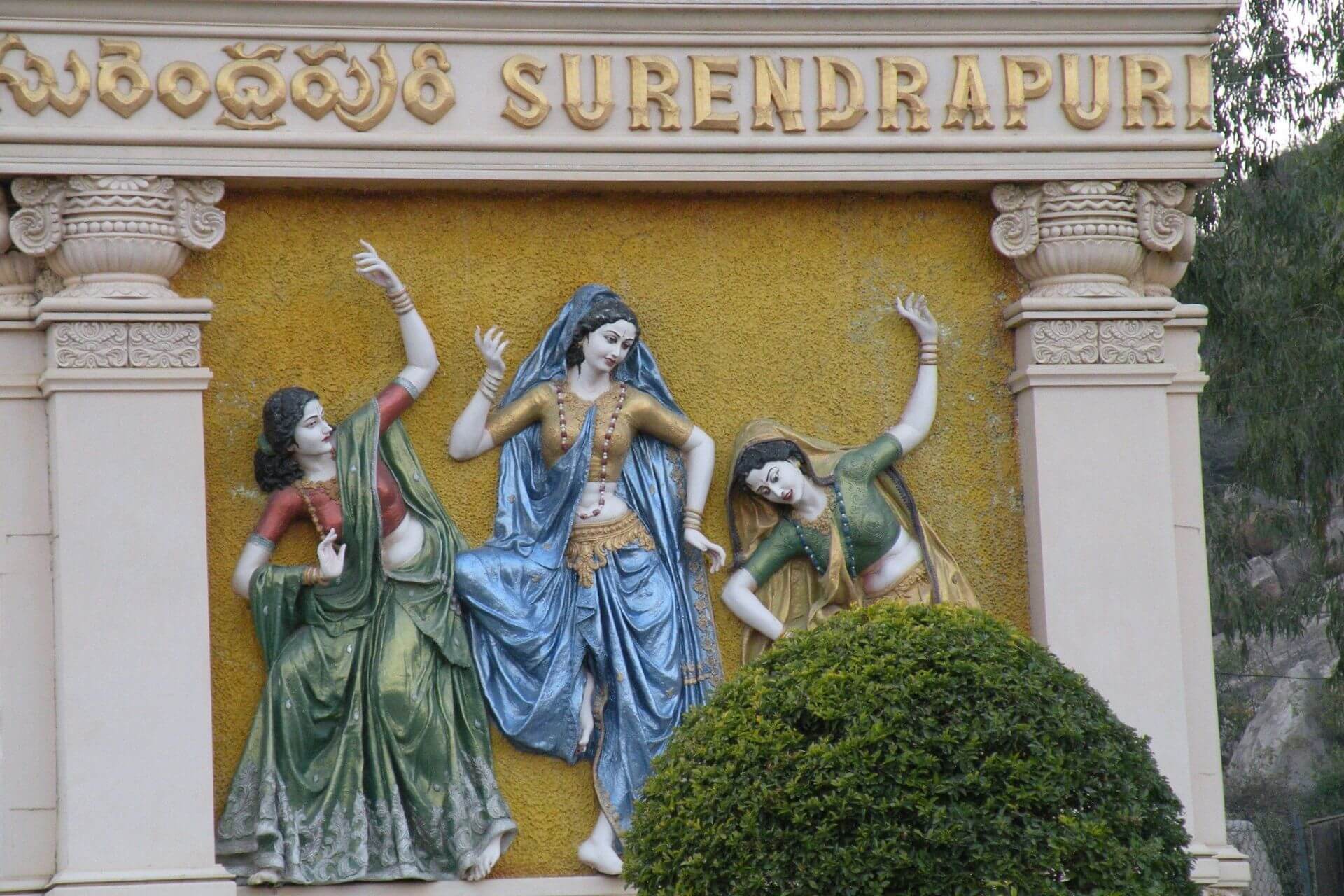
(courtesy: samkit4u)
Hyderabad has evolved from being the Nawab’s city to the upcoming IT hub of India. Once ruled by the Mughals, Nizams, and Qutub Shahis, Hyderabad has seen exponential developments with magnificent monuments, temples, heritage sites, and mosques. The mouth-watering cuisines, splendid nightlife, and multiple cultures coming together make this city worth visiting.
The city is divided into north and south Hyderabad. Southern Hyderabad was established on the banks of river Musi by Muhammad Quli Qutub Shah containing the rich history and culture of the city while Northern Hyderabad forms the new city encompassing the IT sector industry and urbanization.
The Charminar, Golconda Fort, Ramoji Film City, Birla Mandir, Lumbini park, Qutub Shahi Tombs are some of the famous tourist places that you cannot miss while traveling to Hyderabad.
The one more crucial thing that adds beauty to this city is its museums with an aura of rich history and culture. They depict an interesting confluence of the traditional and the modern, bringing stories of the past to life. The deep connection of the things placed in the museum and the history they are associated with narrates the story of a golden era. The architectural beauty and antiques displayed in these museums attract tourists from all over the country.
Salar Jung Museum
Known to be the third-largest museum in India, Salar Jung Museum was originally a private art collection of the Salar Jung family and was declared as the “Institution of National Importance” by the government of India in 1961. It is located on the Salar Jung Road, at Dar-ul-Shifa which lies on the southern bank of the River Musi.
The antiques displayed in the Salar Jung museum belong to the first century. The museum is well-known for its collection of Jade-crafted daggers of Jahangir, weapons of Aurangzeb, musical clocks, historical printed books, and manuscripts. It also has a unique collection of Qurans, written with Gold and Silver, in different fonts and languages.
The pride of this museum is the sculptor of Veiled Rebecca, which is one among the four copies made by an Italian sculptor, Giovanni Maria Benzoni while the other three copies are displayed in museums of the United States.
The Nizam’s Museum

(courtesy: HEH Nizam's Museum, Hyderabad)
Located inside Purani Haveli in Hyderabad, the Nizam’s museum was opened to the public in the year 2000. The museum showcases exquisite pieces of gifts, mementos, and souvenirs that were gifted to the last Nizam of Hyderabad, Osman Ali Khan, by Asaf Jah VII on the occasion of his silver jubilee celebrations in 1936.
The most prominent pieces of the museum include the Golden Throne used during the jubilee anniversary, a diamond engraved gold tiffin box and a glass inlay painting of Mir Osman Ali. The museum also houses the greatest wardrobe-a collection of imperial belongings of the sixth Nizam of Hyderabad. It is also one of the top heritage places to visit in Hyderabad along Golconda Fort.
Automobile fanatics can also admire the collection of vintage cars of the Nizam that have been displayed in the museum. Some among them are a 1930 Rolls Royce, Packard, and a Jaguar Mark V.
Sudha Car Museum

(courtesy: radhakrishna)
Initially built as a hobby and later opened as a museum, Sudha Car Museum is an automobile museum. It displays “crazy cars” resembling everyday objects. The cars presented in the museum are handmade by K. Sudhakar. His name has been recorded in Guinness World Records for building the largest tricycle which he rode in Hyderabad on July 1, 2005. His creations and Sudha Car museum are also mentioned in the Limca Book of Records.
You can witness cars in the shape of objects like beds, stilettos, helmets, handbags, lipsticks, etc. These uniquely designed cars are built from scrap material, and are fully functional and not just showpieces. Along with each car, important information about the making of the cars, the time it took to build them, and their speeds has been displayed. This museum interests kids, automobile lovers, and technology enthusiasts.
Chowmahalla Palace

(courtesy: maleaji)
Constructed during the rule of the fifth Nizam of Hyderabad, Chowmahalla palace is built in an area of 12 acres. It is also one of the best Palaces to visit in Hyderabad. In 2005, the palace was restored by the government and opened for the general public. It gives you a glimpse of the grandeur of the Nizam rulers.
The palace is divided into two courtyards - the southern and the northern courtyard. The southern palace houses four palaces worth seeing. The long corridors, captivating courtyards like Shishe-Alat accompanied by big lawns give the palace a regal look. Another major attraction for tourists is the Clock Tower that stands tall in the palace. This museum is very close to Charminar, another popular tourist attraction in Hyderabad.
History lovers can also explore the council hall and a Roshan Bungalow. Housing various manuscripts and rare books from the collection of the sixth Nizam of Hyderabad, the council hall gives you a peek into their imperial lifestyle. A huge water fountain in front of the palace adds charm to the entryway. Its pillars are beautifully carved. The galleries of the palace exhibit royal belongings including crockery, clothes, furniture, coins, and Qurans from the Nizam’s era.
Surendrapuri

(courtesy: vramarao)
Surendrapuri is also known as the Mythological Museum. It lies on the outskirts of the city and is also a popular place to visit near Hyderabad. The museum is a clear depiction of a man’s vision of bringing the culture and diversity of Indian Mythology together. The man behind this vision is Satyanarayan Kunda.
You walk through a giant lion’s mouth at the entrance, which will leave you in awe. Next, passing through the horn-like structures on both sides of the passages will make you wonder what is waiting for you inside. The ancient Indian mythology speaks of the existence of various worlds popularly known as the Swargloka, Patala Loka, Vishnulok, Brahmalok, etc. You can view the depiction of various Loka’s at this museum.
You can also witness the depiction of Ramayana, Mahabharata, and the Bhagwat Purana as you move ahead in the museum. The museum also contains some of the recreations of the Jyotirlingas, the Shakti Peethas, and the Char Dhams. The most magnificent part of the museum is the re-creation of the river Ganga at Haridwar and the Chakravyuh that trapped Abhimanyu in the Kurukshetra. This museum in Hyderabad is one of its kind in India and attracts visitors from across the country.
Natural History Museum
The Natural History Museums tells you the story of animals living and extinct along with glimpses of their evolution. This museum shows the history of various extinct birds and animals. The museum is located in Bahadurpur,in the middle of one of the largest zoos in Asia - the Nehru Zoological Park.
The structures inside the museum are life-like and they attract tourists and locals alike. The dummies of extinct creatures are showcased in the museum display to give you a more thorough understanding of the need to save existing animals and birds. You can enjoy a guided tour of the museum to get a better understanding of the exhibits. The Natural History Museum attracts tourists especially families and children from all over the country.
Telangana State Archaeology Museum
Situated inside the Hyderabad public garden, the State Museum gives a glimpse of the culture of both Telugu states. The museum was discovered in the 19th century by Archaeologist Henry Cousens. It was later excavated by the Nizam of Hyderabad, who placed all the objects inside it to convert it into a museum. To save the culture and heritage of Hyderabad, the last Nizam of Hyderabad created the Department of Archaeology in 1915. It was a vision of the Nizam to preserve the state’s heritage. It contains a collection of stone sculptures, bronze works, manuscripts, etc.
The museum has remained mainly research-oriented. It also has a Buddhist gallery displaying relics of Buddha from Bavikonda. The biggest attraction of the museum is a 2,353-year old Egyptian Mummy that rests in a glass case and is known to be one out of six Egyptian mummies in India. It was donated to the museum by the 7th Nizam of Hyderabad and was brought to the museum in the year 1930. The State Museum is also known to be the oldest museum in the state.
Birla Science Museum
The Birla Science Museum, comprises five different ‘Science Centres’. They are- the museum, planetarium, art gallery, the center of science, and ‘Dinosaurium’. Also known to be one of the prestigious institutions for science proclamation, it houses India’s first private Space Museum which was inaugurated in July 2019. This space museum tells the story of the establishment, work, and achievements of the Indian Space and Research Organisation.
This museum actively collaborates with various other innovative science organizations to deliver research and development training to students. The Dinosaurium in the museum has small fossils of dinosaur’s eggs, marine shells, and rare fossils of Kotasaurus from the lower Jurassic age which are worth seeing. The Bhaskar auditorium in the museum holds all the events of the museum. This museum is a whole package of knowledge to cater to the curiosity of visitors of all ages.
Village Museum, Shilparamam
Shilparamam is also known as the Rural Museum or Village Museum. Built in 1992, this museum was established with the idea to create an environment for the preservation of traditional crafts. Sprawling over 65 acres of land, the museum is run and maintained by the state government and aims at motivating Indian Artists and promoting the traditional craft. The museum depicts a typical Indian village. You can enjoy a tour and explore the rural culture closely.
The museum showcases life-size statues depicting the day-to-day activities of the rural people of the region. Huts constructed using baked clay and thatch form the perfect backdrop to the mesmerizing village scenes. You can shop for handicrafts and local artifacts prepared by the local artisans. Handcrafted jewelry, tribal woodwork, and hand-woven cloth are among the favorite souvenirs of tourists.
Railway Museum
Built at the Kacheguda Station, the Railway Museum was opened to the general public in April 2015. It depicts the various aspects of the development of Railways during the Nizam's rule in the region. The establishment and development of the railway system in India are showcased at the museum.
Alongside you can also witness the exhibition of various tools and equipment that dates back to the Nizam’s rule. These include prototypes of locomotive coaches, tickets, signaling equipment and working models, etc. An exclusive air-conditioned lounge displays various Audio- Visual screenings telling the story of the origin and growth of the Railways in India. It also screens the other important aspects of railways such as the signals, the bridges, the security, etc.
Also, the museum exhibits a photograph gallery of the rail network during the Nizam’s rule and the inauguration of the Kacheguda Railway Station.
Jagdish and Kamla Mittal Museum of Indian Art
Established in the year 1976, the Jagdish and Kamla Mittal Museum of Indian Art is a collection of personal art of Jagdish Mittal, and his wife Kamala Mittal. Jagdish Mittal who has also won Padma Shri Award has collected artwork over sixty years that includes more than 2000 objects dated between 1 BCE and 1900 Ad. His collection of art uniquely comprises only the pieces produced in the Indian subcontinent.
Some of the precious things from his collection include manuscripts, folk and classical bronzes, wood carving, Islamic calligraphy, etc. The precious possession of the museum is the miniature painting and drawing from 1 BC. It attracts visitors from across the globe and contributes to about 50% of the museum’s total collection.
Health Museum, Lakdikapul
The Health Museum was set up in 1948. The museum displays exhibits related to nutrition, health issues, motherhood, and childbirth. The museum is divided into two sections-one deals with Nutrition and Health Issues, while the other one is focused on motherhood and childbirth. The Health Museum of Hyderabad is one-of-a-kind across the country. The visitors can explore all about the human body and the evolution of medical science at the museum.
The Health Museum still wears its early look from the 40s. There have been no additions or modifications in the exhibits to date. You can enjoy educational films if you visit the museum on Wednesdays and Saturdays. It also has a library where lectures on health and health improvement are conducted. It is open on all days from 10:30 AM to 5 PM except on Fridays.
Nirmala Birla Museum / Modern Art Gallery
The Nirmala Birla Museum also known as the Modern Art Gallery was inaugurated in 2003. Sri N. Chandrababu Naidu, the then Chief Minister of Andhra Pradesh had inaugurated the museum. This museum was the dream project of Smt. Nirmala Birla and took a lot of effort in putting together the collection.
The display has some noteworthy works of art in the gallery. These include a painting titled ‘Krishna’ by Jamini Roy, Amitabh Banerjee’s fascinating work titled ‘gossip’, and Paritosh Sen’s ‘on the Swing’. You can also witness Akbar Padamsee’s 1922, Samir Aich’s ‘The Women 1994’, Tayyub Mehta's ‘untitled’, and many more prominent artworks at the museum.
Nirmala Birla Museum is the only Art Gallery where works of India’s famous artists have been displayed. The gallery is open from 10:30 AM to 8:00 PM on all days of the week.
Heritage Museum, Gunfoundry
The Telangana State Heritage Museum is located at Gunfoundry. It was constructed by the Irrigation and Projects department in 1976. Later, the department of Archaeology &eums took over the reins of the museum in 1990. They have maintained and preserved the collections after excavation. The museum is widely known as the Centenary Heritage Museum.
You can witness artifacts made of terracotta, stucco, iron, prehistoric and megalithic materials. It includes early historic objects and temple sculptures collected from the submergence area of the Srisailam Project. The museum is divided into several sections that give a glimpse into the Telangana history and culture. These sections are: Art through the Ages, Prehistoric Gallery, Proto Historic Gallery, Early Historic Gallery and Scale Models Temple Gallery.
Nehru Centenary Tribal Museum, Banjara Hills
The Nehru Centenary Tribal museum was constructed in 2003 and is dedicated to the 35 tribes that inhabited both Telugu states, Telangana and Andhra Pradesh. The museum showcases the culture and heritage through various displays and dioramas. It is spread over three floors to give you detailed information about the tribes of India. Folk stories are depicted through pictures and literature.
The museum also leverages technology to offer an amazing audiovisual experience to display the lifestyle of the tribes residing in the state. Besides the human and animal figurines you can also see the varieties of tools and hunting equipment used by the locals. Wooden musical instruments and scenes of tribal dance are also on display. Photography is not allowed inside the Nehru Centenary Tribal museum.
Takeaway
Hyderabad glitters with the shimmering memories of the past through its museums. The ‘Pearl City’ has evolved into a fast-paced metropolis over the years but it has retained its rich heritage. Eminent landmarks of the old city of Hyderabad have been preserved carefully to maintain the grandiose of the city. The museums in Hyderabad attract history lovers from across the globe throughout the year.
